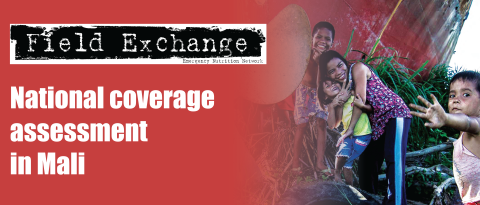Improving food security and addressing nutrition of vulnerable farming communities affected by conflict and natural disaster in mid-western Nepal
By Guido Agostinucci
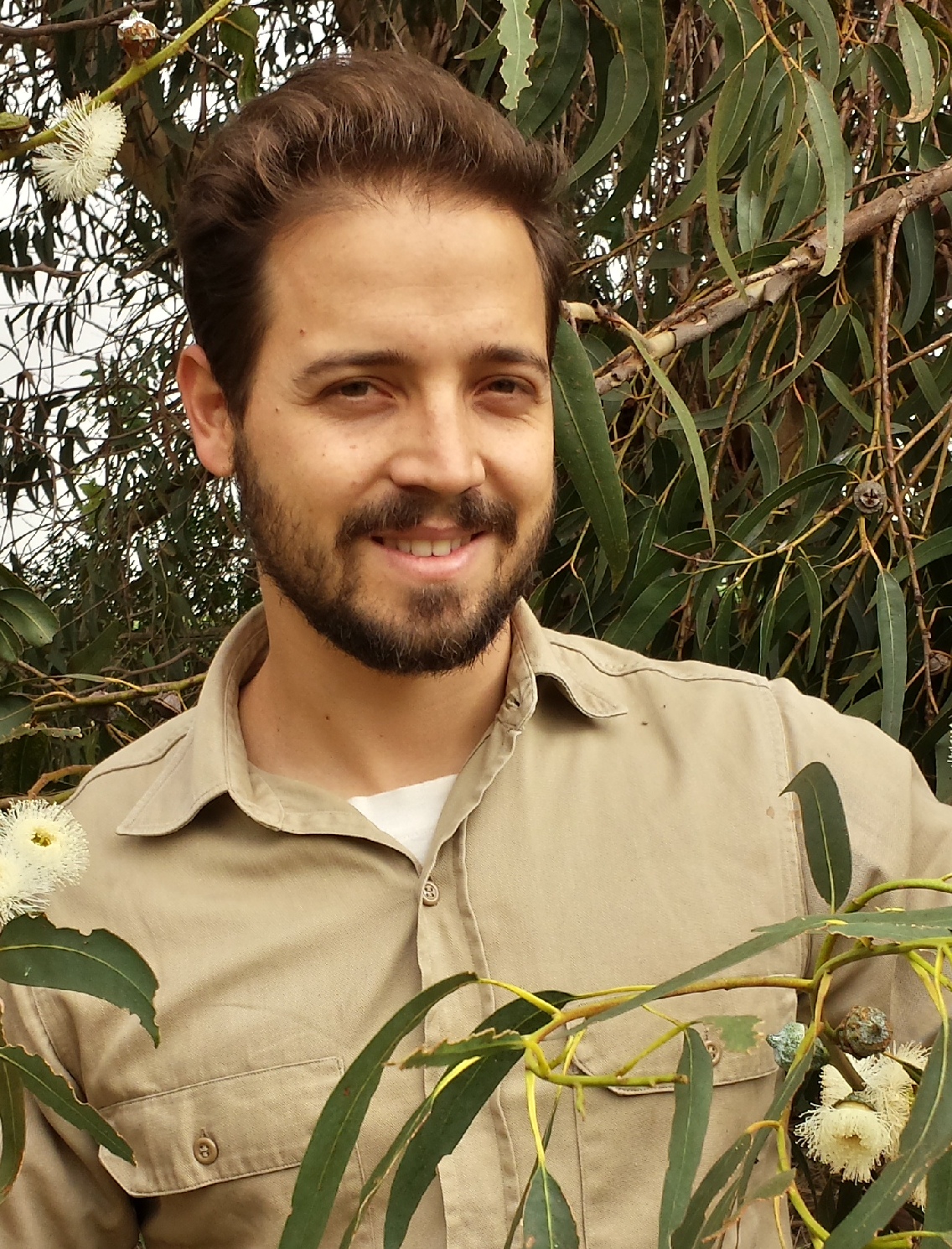
Guido Agostinucci is an agronomist who collaborated with the Faculty of Agriculture of the University of Viterbo and worked as consultant with FAO since 2008. He worked in Nepal as field operations officer and is currently working as consultant on the Syria crisis.
The author wishes to thank all FAO colleagues who were involved in the implementation of the project at district level. Without their continuous dedication, it would have been impossible to carry out such an ambitious programme during the limited timeframe available. A note of appreciation also goes to Department of Agriculture and the Department of Livestock Services of Government of Nepal for supporting the project activities and continuing them beyond the project duration.
Location: Nepal
What we know: Due to longstanding internal conflict and recurrent natural disasters, chronic food insecurity is widespread in agricultural Nepal. There are benefits in linking nutrition with agriculture and emergency response with longer term programmes.
What this article adds: An FAO led project, to improve food security and nutritional status and decrease aid dependency in households in mid-western Nepal, enhance crop and livestock production, increase availability of diverse nutritious foods, improve household self-sufficiency, and enhance nutrition knowledge and awareness.
Nepal is among the poorest and least developed countries in Asia with almost one-third of its population living below the poverty line. About 32% of the total area and 28% of the total population of Nepal are exposed to risks from natural disasters. Agriculture is the mainstay of the economy, providing a livelihood for 66% of the population and accounting for 39% of the country’s Gross Domestic Product1. As a result of a decade long internal conflict from 1996 to 2006, an unstable political situation and recurrent natural calamities2, the Nepalese population, especially the most vulnerable and marginalised segment, continue to suffer from both immediate and long term effects of such events. Chronic food insecurity is pervasive and widespread throughout the country, with localised pockets of extreme food deficiencies. Contributing factors include land ownership issues, geography (land-locked country with vast mountainous terrain) and difficult physical and economical accessibility to agricultural inputs, such as improved crop seeds and fertilisers.
Nepal has the highest malnutrition prevalence in Asia3; half of Nepalese children under the age of 5 are stunted (low height-for-age) as a result of chronic malnutrition4. The situation is even worse in Far and Mid-Western regions of the country, particularly in hilly and mountainous regions5 due to factors including low agricultural productivity, limited purchasing power of the local population, high food prices prevailing in the markets, geographical isolation and under-developed market linkages.
Project overview
Due to the combined effects of the conflict, ethnic tensions, occurrence of floods and landslides in addition to three consecutive years of drought, both local food production and the food security status of the most vulnerable section of the population in a number of districts of the Mid-Western region of Nepal, were severely weakened. In response, the Food and Agriculture Organisation of the United Nations (FAO) formulated a project aimed at improving the food security and nutritional status of affected vulnerable farming communities with the ultimate goal of reducing their dependency on external food aid. The main goals of the project were to: a) increase vegetable and cereal production for household consumption and income generation; b) improve post-harvest capacities; c) replace livestock assets and ensure better animal health care; and d) improve nutritional knowledge and dietary practices through nutrition education.
While the Mid-Western Region of Nepal was selected as the main region of project implementation, being the cradle of the decade long conflict, the specific areas for project intervention were selected on the basis of a pre-established set of criteria as follows:
- Incidence of conflict-induced deaths, injuries and handicaps
- Number of displaced people due to the conflict
- Incidence of conflict-related damage to infrastructure
- Vulnerability to droughts, landslides and hailstorm
- Occurrence of plant and livestock diseases
- Absence of projects providing similar kinds of support.
Based on these criteria, the districts of Jajarkot, Pyuthan, Salyan, Rolpa and Rukum were targeted. Beneficiaries within each district were selected according to the following criteria:
- Households affected by conflict with a special focus on female headed households, families with three or more children and internally displaced persons
- Disadvantaged groups, such as Dalit and Janjati individuals
- Households in remote areas
- Very poor families with food self-sufficiency for less than six months per year
- Households with no irrigation facilities
- Households affected by crop and livestock diseases
- Landless households for livestock related activities
- Households with less than 2 ropani (0.1 Ha) of land.
In 2008, the project was funded by the Kingdom of Spain and related activities were implemented from June 2008 to December 2009. The project was implemented directly by FAO in close partnership with the Department of Agriculture (DoA) and the Department of Livestock Services (DLS) of the Ministry of Agriculture and Cooperatives (MoAC). It involved collaboration with Village Development Committees (VDC), District Development Committees (DDC), Ministry of Health and Population (MoHP) and other UN agencies. Project implementing partners belonging to community based organisations (CBOs) and non-governmental organisations (NGOs) were also essential for effective and efficient implementation of project activities.
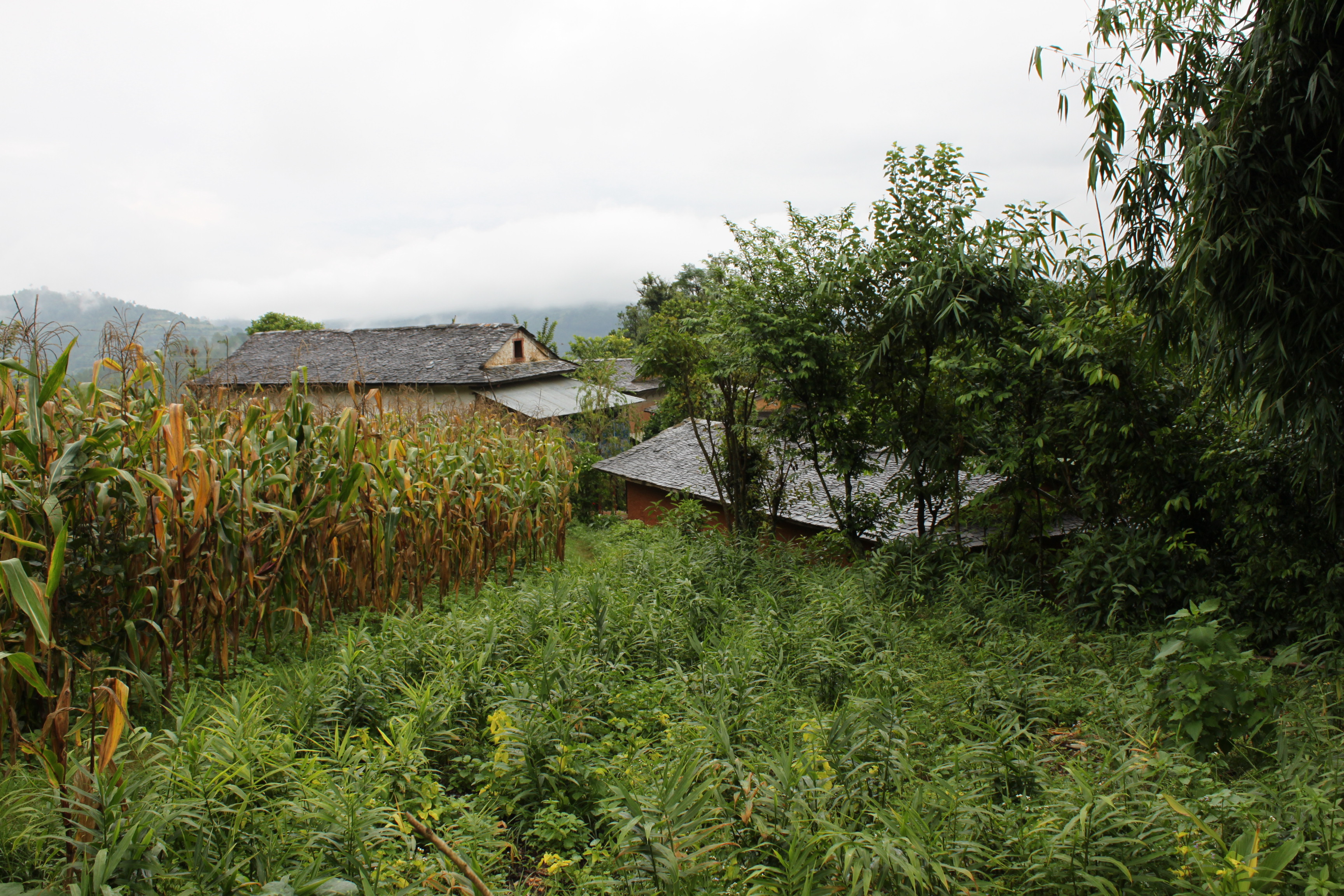 Project activities
Project activities
Project activities were divided into three components: a) crop production, which included training and provision of cereal and vegetable seeds to farmers; b) livestock production which included provision of goats and training, veterinary equipment and shed construction materials and c) nutrition education, including Trainings of Trainers (ToT) and trainings for beneficiaries. In addition, given the agro-ecological diversity of the country and in order to select the most appropriate production packages and cultivation techniques, differentiations were made based on the altitude at which beneficiaries were cultivating their crops. Accordingly, project areas were divided into high hill areas (> 1,800 metres above sea level (m.a.s.l)), mid hill areas (800 to 1,800 m.a.s.l) and low hill areas (< 800 m.a.s.l). In high hill areas, the project supported the production of wheat (Triticum aestivum) and maize (Zea mays), in addition to goat husbandry. In mid hill areas, wheat, maize, finger millet (Eleusine coracana), winter (radish, turnip, broadleaf mustard, pea, French bean, carrot, cabbage onion, cauliflower and broccoli) and summer (cucumber, French bean, tomato, okra and chilli) vegetables were grown. As for the livestock sector, beneficiaries located in mid-hill areas were also supported on goat husbandry. In low hill areas, the crops supported were wheat, summer and winter vegetables. In addition, beneficiaries also received support on goat production.
The choice of the 20 species of crops to be supported for production was based on their adaptation to the local agro-conditions and on their nutritional value. The selected varieties were those preferred by local farmers and approved by the MoAC. Similarly, for the livestock production component of the project, animals adapted to local climatic and feeding conditions were selected and procured locally; this also prevented transport induced stress. In addition, nutrition education activities were implemented in all three agro-ecological areas covered by the project.
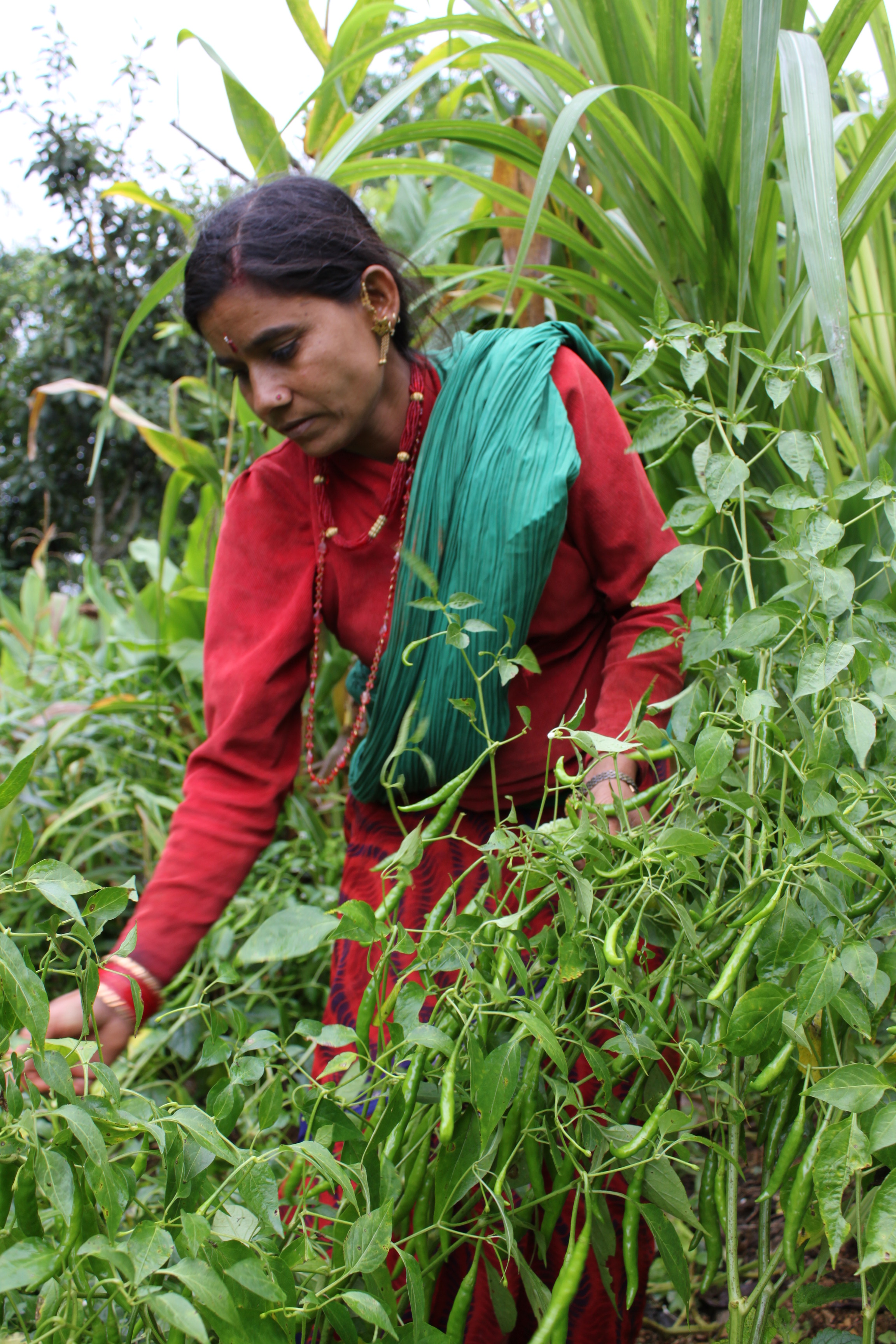 Results
Results
A total of 15,768 beneficiary households were supported by the project. Out of these, 14,173 households undertook crop production activities, 1,595 households were involved in livestock production and 8,670 families actively participated in nutrition trainings. Just under one quarter (23.7%) of beneficiary households were headed by women while 55.2% belonged to marginalised communities such as Dalits and Janjatis. Overall, 7.4% of beneficiary families assisted by the project had been directly affected by the conflict through displacement, loss of a family member and/or loss of production assets. A total of 144 community health workers participated in FAO’s TOT sessions on nutrition. The project also enhanced the capacity of NGOs, Government bodies, CBOs, veterinary staff and extension workers who were directly involved in project implementation. Detailed results by project component are as follows:
a) Crop production
While seed species were chosen based on their suitability to the different agro-ecological areas, priority was given to crops that would contribute most to food security and dietary intake. Both winter and summer cereals were chosen so as to provide the bulk of the food and energy in the form of carbohydrates. Winter and summer vegetables were selected so as to provide essential vitamins and minerals. The agriculture sector training programme was divided into summer and winter cropping seasons and included TOTs and trainings for beneficiaries. In each district, staff from the DoA and implementing partners were trained on technical matters specific to each crop, as well as on how to select seeds for multiplication and quality testing. Training and communications strategies were also an important topic of the ToTs which were essential to transfer acquired knowledge efficiently. The beneficiary training sessions were carried out at village and settlement levels and included valuable topics such as nursery preparation, crop management issues to enhance crop productivity, sensitisation on post-harvest losses and physiological maturity of vegetables, seed selection and preservation for future planting. All beneficiaries received a pictorial handbook to reinforce learning.
b) Livestock production
A total of 3,296 goats (3,190 does and 106 bucks) were distributed to 1,595 households with each family receiving two does. In addition, one in every 15 households was provided with a high quality buck to be shared for breeding purposes amongst the community. Roofing materials for the construction of an improved design of sheds for the recovery of animals were also provided to all livestock beneficiaries. Remaining shed construction materials and the necessary labour for the construction were taken care of by the beneficiaries themselves; this confirmed ownership and commitment to the activity. In each district, a set of veterinary equipment was provided to the District Livestock Service Office (DLSO) to ensure the provision of essential veterinary services such as artificial insemination, vaccination, disease diagnosis and training. All livestock beneficiaries received a comprehensive training on goat rearing in addition to a pictorial handbook to reinforce learning. The trainings were organised through ToTs for NGOs and government staff.
c) Nutrition education
The sensitisation programme on nutrition was carried out through the support of Female Community Health Workers (FCHWs) who were selected from FAO’s existing partners in each VDC. FCHWs and FAO’s implementing partners were trained through a series of ToTs and subsequently passed on the acquired knowledge by organising nutrition education training for beneficiaries. These specifically focused on pregnant and breastfeeding women, women with children below five years of age, elderly people and poor households. Topics included practical demonstrations on how to select and prepare nutritious foods, nutritional practices for different age groups and hygienic recommendations for food preparation. Ingredients utilised during the preparation of nutritious food included those deriving from crops grown with the support of the project. In order to support training efforts on nutrition education, two different handbooks were developed - one handbook reinforced nutrition knowledge of community mobilisers while the second targeted nutrition education at beneficiary families.
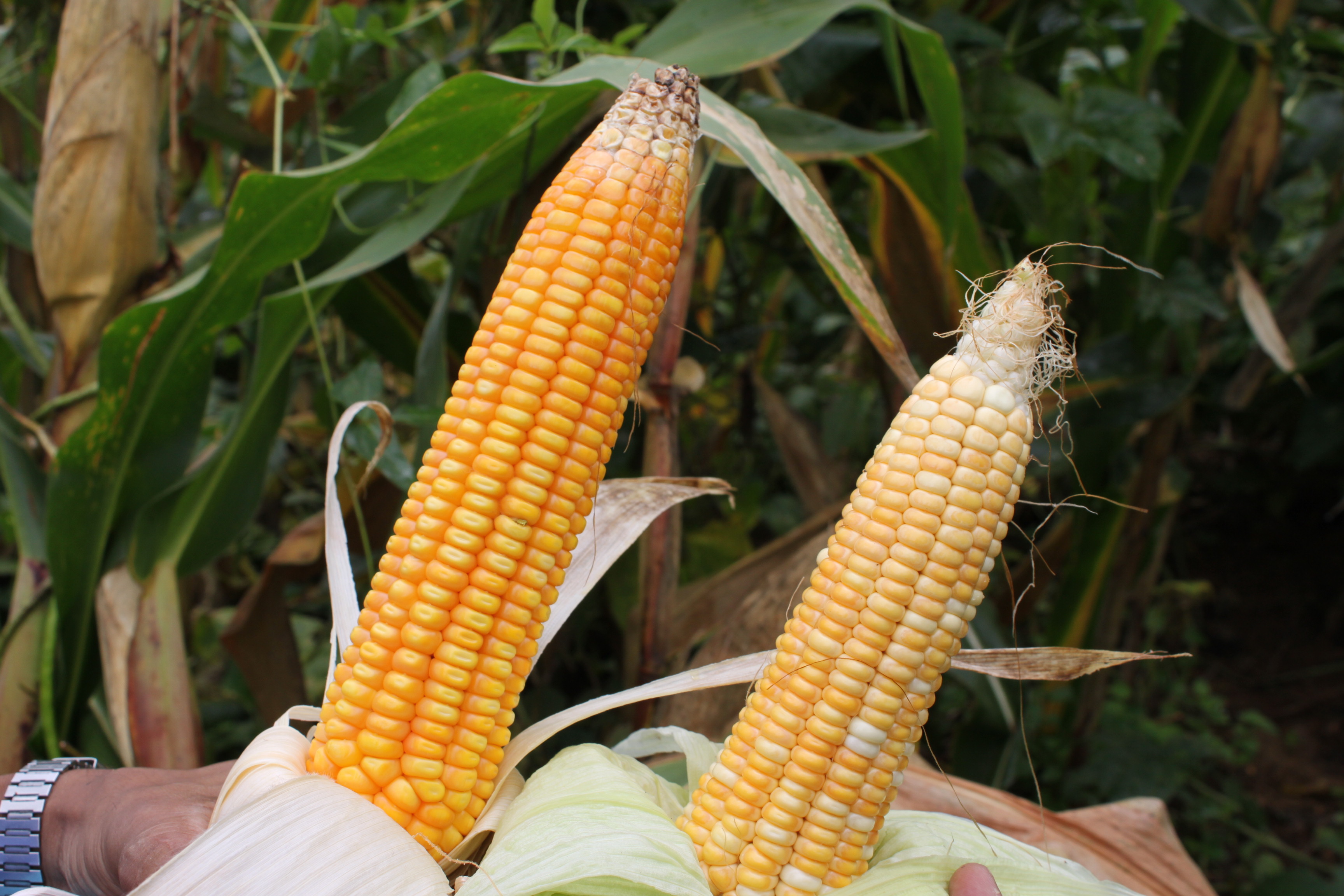 Impact
Impact
The project significantly enhanced the crop and livestock production capacities of the beneficiary households. As part of the crop component of the project, approximately 8,120 hectares of vegetables and cereal crops were planted. Compared to local varieties cultivated with traditional methods, average yield increases ranged between 10% and 25% while higher resistance to local pests and diseases were observed (see Table 1 for details). Because of this, most beneficiary farmers decided to re-plant second generation seeds of rice, maize, wheat and finger millet, as well as some vegetable species distributed by the project. Moreover, the significant number of species and varieties of crops supported by the project increased awareness amongst farmers on the importance of crop diversity, thus lowering the risk of total crop failures to which monocultures are more susceptible. The importance of choosing quality seeds and the fact that these are the least expensive but most important factors influencing yield potential were other fundamental concepts learnt by farmers. Thanks to the project, the availability of second generation quality seeds at the local level increased considerably. Beneficiaries also gained a better consciousness of the nutritional content of each crop species, allowing them to have more balanced and nutritious diets.
Table 1: Average crop yields and impact of crop production activities per crop type |
|||||
Maize |
Wheat |
Rice |
Finger millet |
Summer and winter vegetables |
|
|
Average baseline yield data (t/Ha) |
1.47 |
1.22 |
1.88 |
1.03 |
11.98 |
|
Average yield after project (t/Ha) |
1.76-1.84 |
1.4-1.5 |
2.0-2.2 |
1.18 |
n.a. |
|
Area cultivated with project support (Ha) |
1,206 |
1,120 |
155 |
4,743 |
448 x 2 |
|
Additional impact of project activities |
20-25% yield increase, better quality fodder, shorter production cycle, reduced vulnerability to lodging, selfproduction of seeds by farmers |
15-20% yield increase, improved varieties utilised, a portion of production kept as seed for next planting season |
10-15% yield increase, selfproduction of seeds by farmers |
Promotion of its use intercropped with maize, important nutritional crop |
Each household cultivated an average of 350 m2, promotion of vegetable production and consumption for improved nutrition, new species introduced, approx. 20% of production sold for income generation |
In terms of livestock activities, the project allowed a more sustainable improvement of the goat sector and increased the availability of animal products which represent an important source of protein. On average, each beneficiary was able to add between one and two units to their goat flock after the first year of the project. The provision of essential veterinary equipment to district level government livestock service providers ensured support to farmers beyond the duration of the project. Moreover, capacity development in livestock production was institutionalised through TOTs to key government personnel and partner NGOs.
The nutrition component of the project bridged the agriculture and livestock sectors. Nutritional status or food consumption was not directly measured. However dietary diversification was supported by promoting the availability of vegetables and animal proteins; the number of vegetable species grown increased from an average of 3.7 prior to the project intervention, to 5.1 by the end of the project. The number of months for which beneficiaries consumed self-produced vegetables also increased, from 3.3 months to 4.3 months a year. There was a fall in the number of beneficiary households reporting food self-sufficiency for less than 6 months a year (81% to 67%) and an increase in those with more than six months self-sufficiency (from 19.2% to 33%). The increased number and availability of goats and goat products in the communities is assumed to have increased consumption of proteins from animal origin. The nutrition component of the project also enhanced the nutritional knowledge of beneficiaries and increased awareness of nutritious and locally available food. It raised awareness about the importance of associating nutrition with agriculture, as well as linking emergency responses in such sectors with medium and long-term programmes.
The activities carried out under the project were replicated and expanded to some additional ten districts in a subsequent FAO project which was funded by the European Union. Likewise, the training materials produced by the project were utilised by the Department of Agriculture and Department of Livestock Services for their capacity building programme and ToTs of personnel.
For more information, contact: Guido Agostinucci, email: Guido.Agostinucci@fao.org
1 MoAD, 2013. Department of Agriculture, Ministry of Agriculture Development. http://www.doanepal.gov.np/
2 Nepal is one of the 20 most disaster-prone countries in the world. NRRC, 2011. Disaster Risk Reduction in Nepal: Flagship Programmes. Nepal Risk Reduction Consortium (NRRC), Kathmandu.
3 Hobbs, C., 2009. The cost of coping: A collision of crises and the impact of sustained food security deterioration in Nepal. United Nations World Food Programme, Kathmandu.
4 Shively, S., Gars, S. and Sununtnasuk, C., 2011. A Review of Food Security and Human Nutrition Issues in Nepal. Purdue University, West Lafayette.
5 OCHA, 2008. Nepal Needs Analysis Framework Key Findings September 2008. United Nations Office for the Coordination of Humanitarian Affairs (UNOCHA). Kathmandu


